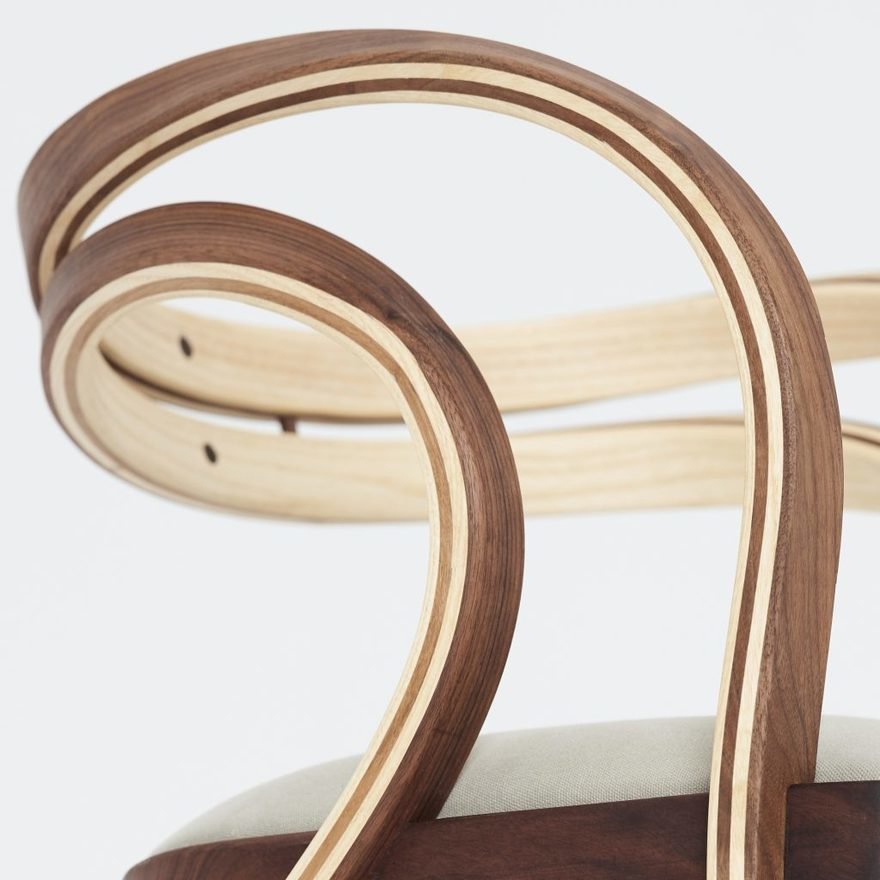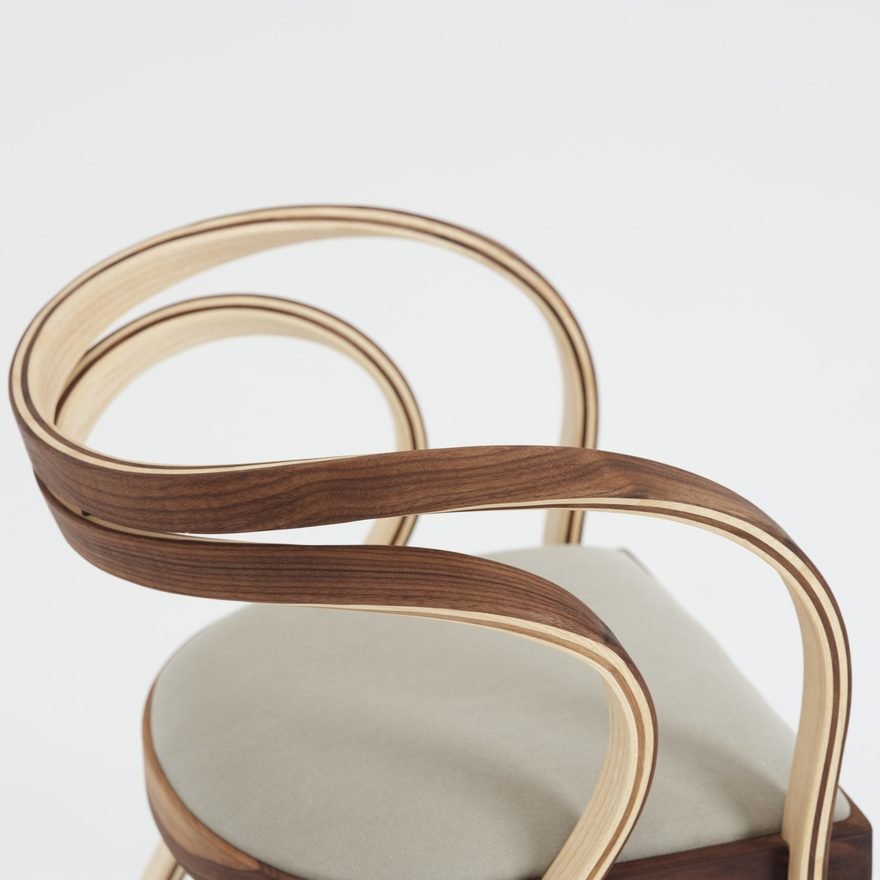Architect Andrés Mariño Maza's Extreme Steam-Bent Wood Furniture
Harnessing boatbuilding techniques in a quest for lightness
"The concept of lightness is very interesting to me," writes Spain-based architect/designer Andrés Mariño Maza. "I equate lightness to efficiency; for example the structural efficiency required for a bird to take flight, materialized in a hollow, highly optimized skeleton."
In his quest for lightness, Maza utilizes the steam-bending techniques used by boatbuilders to create furniture made from impossibly thin strips of material. Here's his Barlovento Stool, made from American Red Oak:







His Nina & Beni Chair is made from American Walnut and Ash:








His Flect Rocker is also made from American Walnut and Ash:







Here's a glimpse at Maza's production process, which starts with a five-axis CNC mill used to create the forms that the wood is clamped to:
Enter a caption (optional)
A side note about steam-bending:
When I was still living in New York, I was training in martial arts with a well-known TCM (Traditional Chinese Medicine) doctor. A patient had come to him complaining of chest pain; he'd seen multiple western doctors, they'd all run tests, and no one could figure out what was wrong with him.
Initially, the TCM doctor also could not find the cause of the patient's chest pain—until he found out what the patient did for a living. He made steam-bent furniture, spending much of the day pressing hot wooden strips into molds.
In Traditional Chinese Medicine, it's believed that the palms of the hand are internally linked to the heart, and the TCM doctor told the patient that spending all day scorching his palms was essentially superheating his heart and causing the pain. The patient changed his shop practices, and the pain went away.
-
oFavorite This
-
Q2Comment
K
{Welcome
Create a Core77 Account
Already have an account? Sign In
By creating a Core77 account you confirm that you accept the Terms of Use
K
Reset Password
Please enter your email and we will send an email to reset your password.


Comments
ammonia vapor turns wood to rubber, not as simple and easy to do as water vapor but I'd bet these radical curves are bent solid wood
Seeing the lines on these pieces, and the seeming ease with which the material is subjected to complex bends in the video, I suspect this isn’t traditional steam bending per se but an application of Compwood. Beyond compwood’s extreme bendability, regarding Rain’s side-note this would be worked at room temperature rather than with hot wood straight out of the steamer. Alternatively, if they are indeed hot bending then I’d look to a double-bend technique that (at least) Michael Fortune has documented. The wood out of the steamer is first bent on a generic curved form, put back in the steamer, re-bent in the opposite direction on the generic form, put back in the steamer again, then bent on the final production form. The bend/re-bend process more thoroughly softens up the lignins in the wood, a sort of “mini compwood” effect, allowing the final bends to be more extreme and have less spring back than basic steam bending admits.